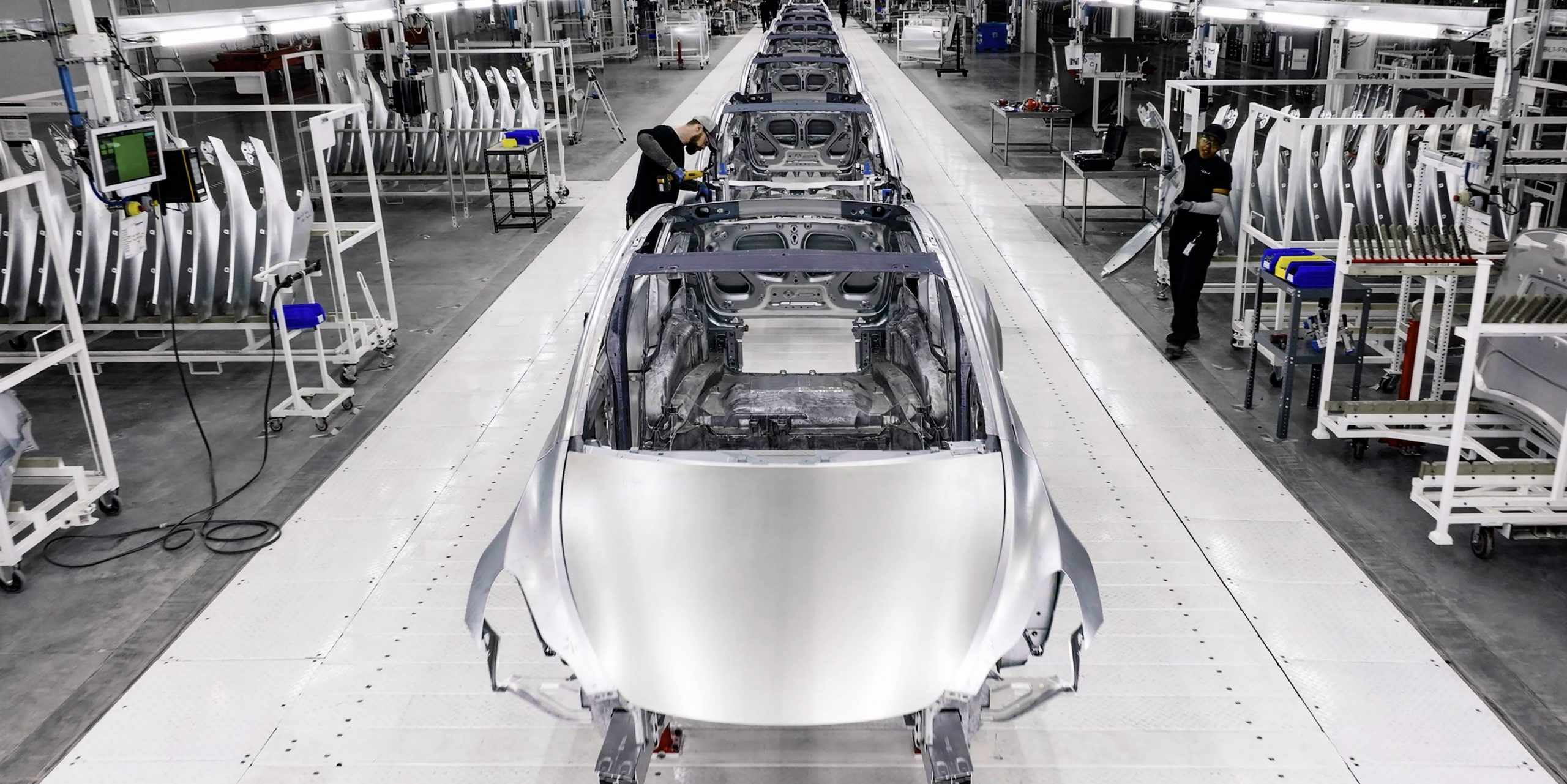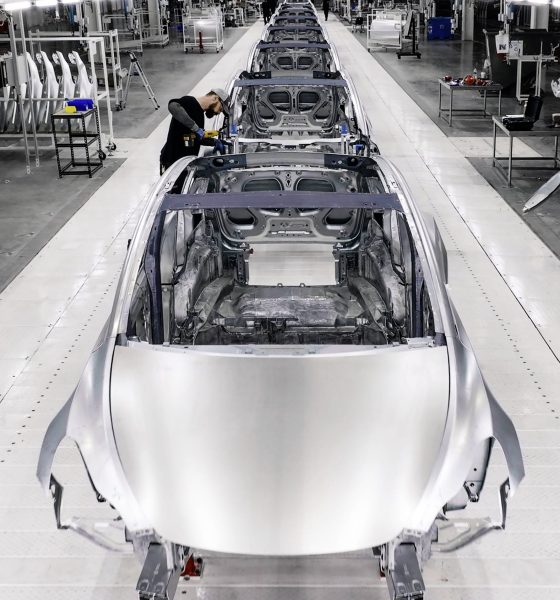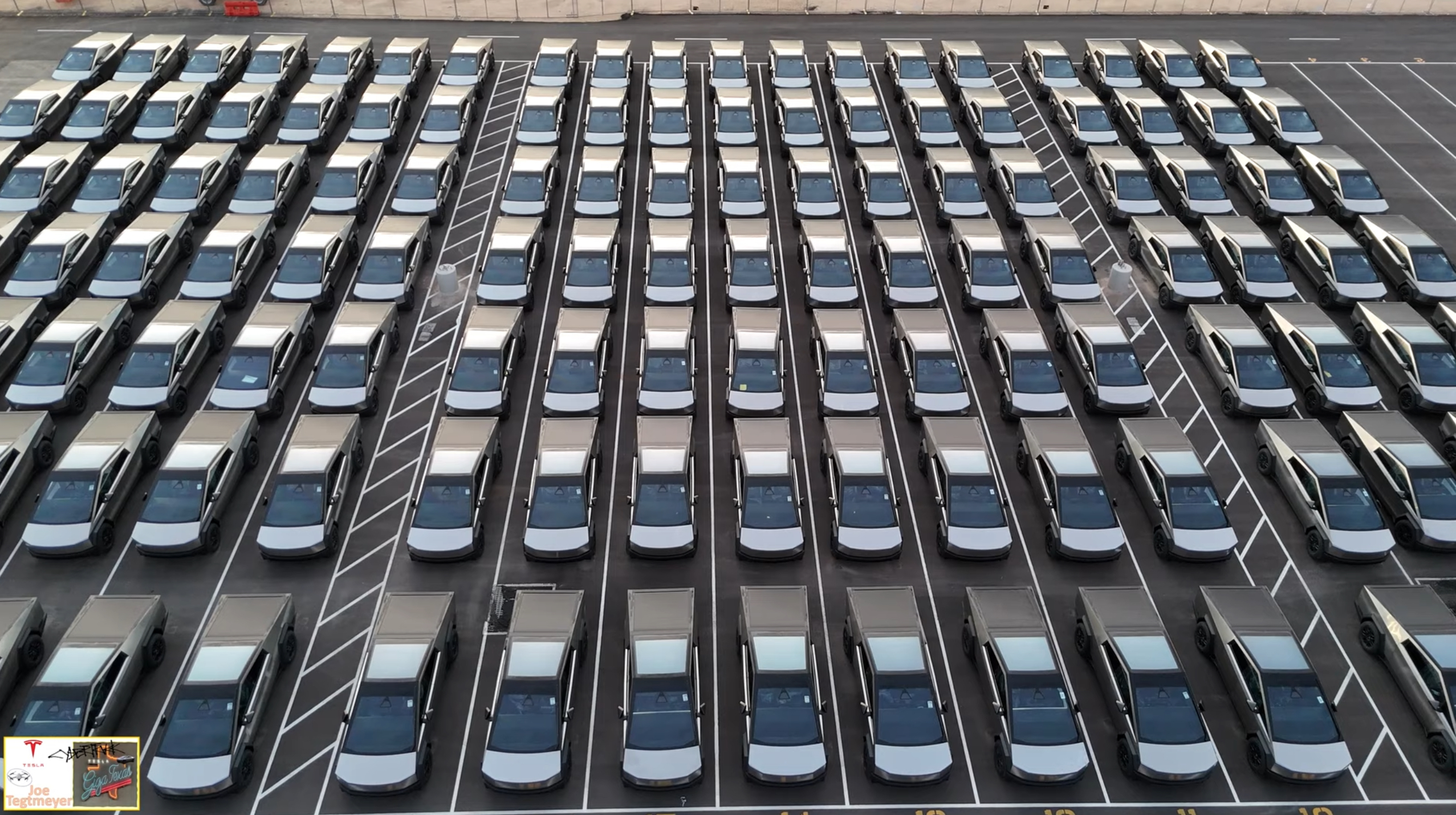

Investor's Corner
Top 10 questions Tesla (TSLA) investors want to know from the Q2 2022 earnings call
Tesla (NASDAQ:TSLA) is holding its second-quarter earnings call after markets close today, July 20, 2022. As in previous quarters, Tesla investors have voted for the top questions that they want the company’s executives to answer at the upcoming Q2 2022 earnings call.
As noted by Say, the questions that Tesla investors have submitted for the second quarter earnings call represent inquiries from both retail and institutional investors.
Following are the Top 10 Questions from Retail Tesla investors:
- How do you feel the progress of FSD is going, and does Andrej Karpathy leaving have any significant impact on any timelines/potential progress?
- How is the 4680 ramp going, and is Giga Texas producing cells yet?
- Can you speak w/some level of precision on the 4680 ramp, expected vs. actual yield at this point in time? Same for expected daily output vs. actual, and when does output start meeting plan?
- Will there be early access for Tesla long-term investors to have early access to SpaceX as an investment opportunity?
- How does $TSLA plan to handle all the misinformation, attacks, and fake news against Tesla and Elon Musk? We have been dealing with this and it affects the stock.
- How do you plan on executing your strategies to create massive scale? Any ETA on Master Plan Part 3?
- Would you consider buying back shares if we can maintain profitability?
- What are the biggest 4680 headwinds? And what do you think 4680 production output will be by the end of 2022?
- Any update with Tesla HVAC that can be shared?
- Is Tesla still planning a software development kit and app store for third-party developers to make and sell Tesla apps?
And the following are the questions from Tesla institutional investors.
- Chinese EV manufacturers seem to be doing a better job than their western competitors (excluding Tesla) at innovating in software and design. How can Tesla make sure the company is staying ahead of those manufacturers, both within and without China?
- When will Tesla have a unified vector space for both the static and moving object network? Will this be v11 or a later version? If the latter, can you explain what makes it a difficult problem in layman’s terms?
- Elon recently tweeted about lowering prices “once inflation cools down.” Can you elaborate on what you mean by cooling down and how aggressively the company will lower prices? More broadly, how do you think about auto pricing longer-term?
- You made the right economic call before most on inflation when you diversified into bitcoin. It has since shown it’s not much of a hedge in the real-world test the last few months. How do you think about it as an asset over the LT, and what do you need to see to change your view?
- With regards to the tamp of production in Austin and Berlin, how is the situation with regards to the supply of semiconductors, battery cells, and other components? How about cost inflation impacting profitability of these and other plants?
- What’s the source of Energy for Tesla Berlin? Would the plant would be considered a priority for the German government in case of Gas / Energy rationing?
- Assuming technical hurdles are achieved, what is Tesla’s plan for autonomy/robotaxi? Do you expect to first deploy into repetitive routes like Vegas Loop/airport shuttles? or launch fleets in urban areas? What is assessment of political willpower for each?
- What sort of demand has tesla seen for Optimus? How would you characterize this demand in terms of units? Re: economics, a hardware fee with SaaS element seems to make sense but can you guide on dollar amounts the market may be willing to pay per unit + exp. margins (at scale)?
- At what revenue level will Tesla have to grow its Energy Generation and Storage business to reach profitability, and when might that be achieved? Will you need new battery or solar technology advancements?
- How would you rate the EV industry’s progress in achieving sustainable transport, and what are the 3 most likely countries Tesla will need new Gigafactories to achieve sustainable transport?
Disclaimer: I am long TSLA.

Investor's Corner
Tesla analyst realizes one big thing about the stock: deliveries are losing importance

Tesla analyst Dan Levy of Barclays realized one big thing about the stock moving into 2026: vehicle deliveries are losing importance.
As a new era of Tesla seems to be on the horizon, the concern about vehicle deliveries and annual growth seems to be fading, at least according to many investors.
Even CEO Elon Musk has implied at times that the automotive side, as a whole, will only make up a small percentage of Tesla’s total valuation, as Optimus and AI begin to shine with importance.
He said in April:
“The future of the company is fundamentally based on large-scale autonomous cars and large-scale and large volume, vast numbers of autonomous humanoid robots.”
Almost all of Tesla’s value long-term will be from AI & robots, both vehicle & humanoid
— Elon Musk (@elonmusk) September 11, 2023
Levy wrote in a note to investors that Tesla’s Q4 delivery figures “likely won’t matter for the stock.” Barclays said in the note that it expects deliveries to be “soft” for the quarter.
In years past, Tesla analysts, investors, and fans were focused on automotive growth.
Cars were truly the biggest thing the stock had to offer: Tesla was a growing automotive company with a lot of prowess in AI and software, but deliveries held the most impact, along with vehicle pricing. These types of things had huge impacts on the stock years ago.
In fact, several large swings occurred because of Tesla either beating or missing delivery estimates:
- January 3, 2022: +13.53%, record deliveries at the time
- January 3, 2023: -12.24%, missed deliveries
- July 2, 2024: +10.20%, beat delivery expectations
- October 3, 2022: -8.61%, sharp miss due to Shanghai factory shutdown
- July 2, 2020: +7.95%, topped low COVID-era expectations with sizeable beat on deliveries
It has become more apparent over the past few quarters that delivery estimates have significantly less focus from investors, who are instead looking for progress in AI, Optimus, Cybercab, and other projects.
These things are the future of the company, and although Tesla will always sell cars, the stock is more impacted by the software the vehicle is running, and not necessarily the vehicle itself.
Investor's Corner
SpaceX IPO is coming, CEO Elon Musk confirms
However, it appears Musk is ready for SpaceX to go public, as Ars Technica Senior Space Editor Eric Berger wrote an op-ed that indicated he thought SpaceX would go public soon. Musk replied, basically confirming it.

Elon Musk confirmed through a post on X that a SpaceX initial public offering (IPO) is on the way after hinting at it several times earlier this year.
It also comes one day after Bloomberg reported that SpaceX was aiming for a valuation of $1.5 trillion, adding that it wanted to raise $30 billion.
Musk has been transparent for most of the year that he wanted to try to figure out a way to get Tesla shareholders to invest in SpaceX, giving them access to the stock.
He has also recognized the issues of having a public stock, like litigation exposure, quarterly reporting pressures, and other inconveniences.
However, it appears Musk is ready for SpaceX to go public, as Ars Technica Senior Space Editor Eric Berger wrote an op-ed that indicated he thought SpaceX would go public soon.
Musk replied, basically confirming it:
As usual, Eric is accurate
— Elon Musk (@elonmusk) December 10, 2025
Berger believes the IPO would help support the need for $30 billion or more in capital needed to fund AI integration projects, such as space-based data centers and lunar satellite factories. Musk confirmed recently that SpaceX “will be doing” data centers in orbit.
AI appears to be a “key part” of SpaceX getting to Musk, Berger also wrote. When writing about whether or not Optimus is a viable project and product for the company, he says that none of that matters. Musk thinks it is, and that’s all that matters.
It seems like Musk has certainly mulled something this big for a very long time, and the idea of taking SpaceX public is not just likely; it is necessary for the company to get to Mars.
The details of when SpaceX will finally hit that public status are not known. Many of the reports that came out over the past few days indicate it would happen in 2026, so sooner rather than later.
But there are a lot of things on Musk’s plate early next year, especially with Cybercab production, the potential launch of Unsupervised Full Self-Driving, and the Roadster unveiling, all planned for Q1.
Investor's Corner
Tesla Full Self-Driving statistic impresses Wall Street firm: ‘Very close to unsupervised’
The data shows there was a significant jump in miles traveled between interventions as Tesla transitioned drivers to v14.1 back in October. The FSD Community Tracker saw a jump from 441 miles to over 9,200 miles, the most significant improvement in four years.

Tesla Full Self-Driving performance and statistics continue to impress everyone, from retail investors to Wall Street firms. However, one analyst believes Tesla’s driving suite is “very close” to achieving unsupervised self-driving.
On Tuesday, Piper Sandler analyst Alexander Potter said that Tesla’s recent launch of Full Self-Driving version 14 increased the number of miles traveled between interventions by a drastic margin, based on data compiled by a Full Self-Driving Community Tracker.
🚨 Piper Sandler reiterated its Overweight rating and $500 PT on Tesla $TSLA stock
Analyst Alexander Potter said FSD is near full autonomy and latest versions showed the largest improvement in disengagements, from 440 miles to 9,200 miles between critical interventions pic.twitter.com/u4WCLfZcA9
— TESLARATI (@Teslarati) December 9, 2025
The data shows there was a significant jump in miles traveled between interventions as Tesla transitioned drivers to v14.1 back in October. The FSD Community Tracker saw a jump from 441 miles to over 9,200 miles, the most significant improvement in four years.
Interestingly, there was a slight dip in the miles traveled between interventions with the release of v14.2. Piper Sandler said investor interest in FSD has increased.
Full Self-Driving has displayed several improvements with v14, including the introduction of Arrival Options that allow specific parking situations to be chosen by the driver prior to arriving at the destination. Owners can choose from Street Parking, Parking Garages, Parking Lots, Chargers, and Driveways.
Additionally, the overall improvements in performance from v13 have been evident through smoother operation, fewer mistakes during routine operation, and a more refined decision-making process.
Early versions of v14 exhibited stuttering and brake stabbing, but Tesla did a great job of confronting the issue and eliminating it altogether with the release of v14.2.
Tesla CEO Elon Musk also recently stated that the current v14.2 FSD suite is also less restrictive with drivers looking at their phones, which has caused some controversy within the community.
Although we tested it and found there were fewer nudges by the driver monitoring system to push eyes back to the road, we still would not recommend it due to laws and regulations.
Tesla Full Self-Driving v14.2.1 texting and driving: we tested it
With that being said, FSD is improving significantly with each larger rollout, and Musk believes the final piece of the puzzle will be unveiled with FSD v14.3, which could come later this year or early in 2026.
Piper Sandler reaffirmed its $500 price target on Tesla shares, as well as its ‘Overweight’ rating.








